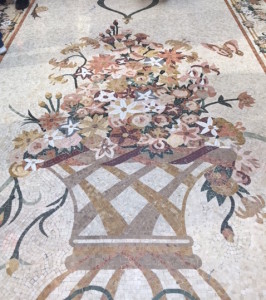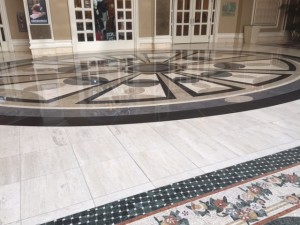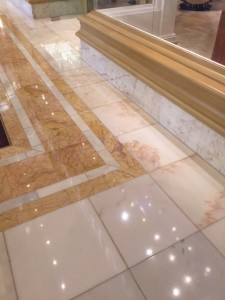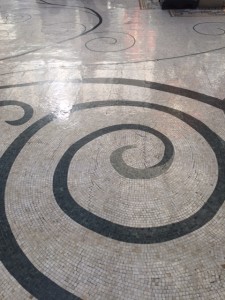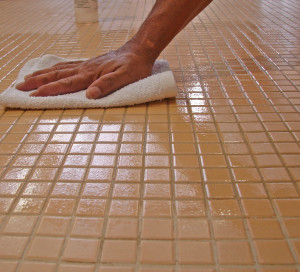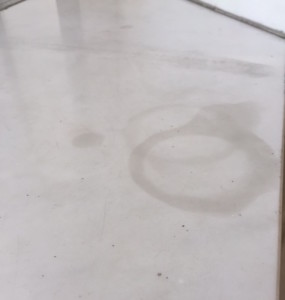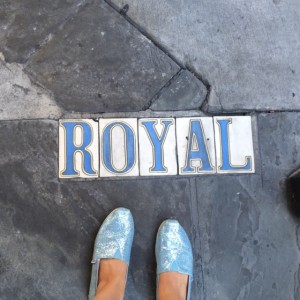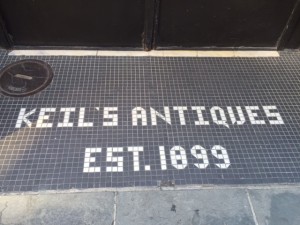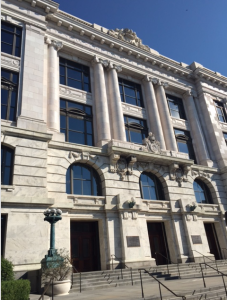My father Rawi Tabbah moved to the United States when he was 17 years old. He started his business, International Stoneworks in 1982 and I joined his company almost seven years ago. He is living what we call the American Dream.
My blog this week is about our most famous immigration site, Ellis Island. I had the opportunity to visit this landmark last week. Not only was it an opportunity to see how this site has been preserved and restored, but it also helped me to appreciate the struggle and the stories of those who bravely immigrated to our great country.
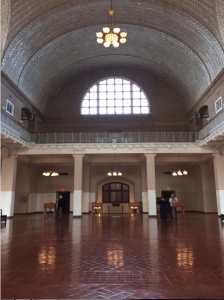
The Registry Room
The largest room in the main building on Ellis Island is the Registry Room. This is where new arrivals were inspected and registered by the Immigration Service officers. Can you believe that they registered approximately 5,000 people per day? The room as we see it today, was restored to look as it appeared during 1918 – 1924, when immigration was at its peak. The stunning tile ceilings were in excellent condition and required little restoration, just simple cleaning.
Out of 28,832 tiles, only 17 tiles were replaced. Also the decorative Caen-stone plaster on the balcony walls was restored.
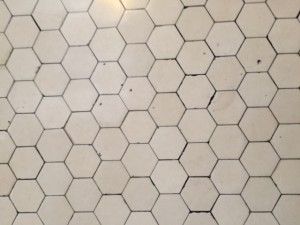
The Railroad Ticket Office
The Railroad Ticket Office was added to the main Ellis Island building in 1905.
This location is where immigrants made travel arrangement to their final destination across the United States. Keep in mind, some immigrants already had family living in America. Also, various immigrants had heard of job opportunities across the Northeast and Midwest. Only 1/3 of the immigrants planned to stay in New York. At that time, immigrants traveled by railroad or steamship.
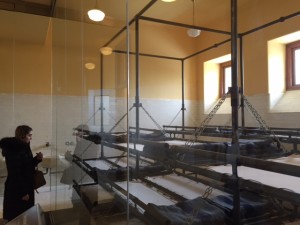
Dormitory Room
The Dormitory Room was occupied by immigrants who were temporarily detained. Some immigrants may have come into our country with illnesses, which was one reason why they were not granted immediate freedom. This room was restored to how it appeared in 1908.
The restoration of Ellis Island was a major process that recovered not only the past, but also part of America’s history.
In 1965, President Lyndon B. Johnson signed a proclamation that recognized the historical significance of Ellis Island by incorporating the site into the Statue of Liberty National Monument.
The restoration process occurred between 1982 to 1990, but the major restoration project was sparked in 1986 for the Liberty’s Centennial.
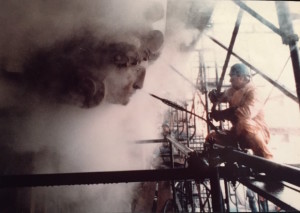
Prior to this restoration, there was a room-by-room investigation and an archeological study of the entire site. The goal was to salvage and preserve as much as possible. Of course they planned for the addition of the museum to show the immigration experience as well as how the immigrants took to their new life in America.
When it was time to restore the exterior of the building, they found black stains due to soot and pollutants. The elaborate limestone trim was cleaned with high pressured jets of steam in 1988.
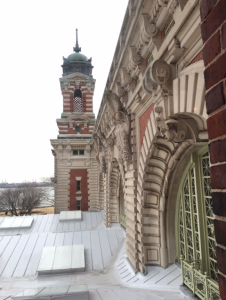
The granite foundation was cleaned with a solution of chemicals and water. (Remember that limestone reacts to acids while most granites do not.)
At the time of restoration, many of the interior walls were adorned with graffiti from the immigrants. (This particular one was found on a column in one of the west wing’s former detention rooms.)
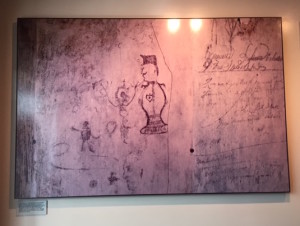
During the renovation process, the graffiti was discovered and was preserved where it was found or the graffiti was carefully removed and placed in the museum.
These immigrants came to our country to strive to make a better life for themselves and their families. It is awe-inspiring what one person can do to better his (or her) life, which brings me back to my dad. When he came to America during the 1970’s, he may not have known at that time that he would end up starting his own business. Because of his bravery and persistence, he has enabled me the opportunity to work in this amazing company, in this amazing country.











